BUZZ/OFF
Leave them or rewild them? Survival plan for bees clouded by a swarm of opinion
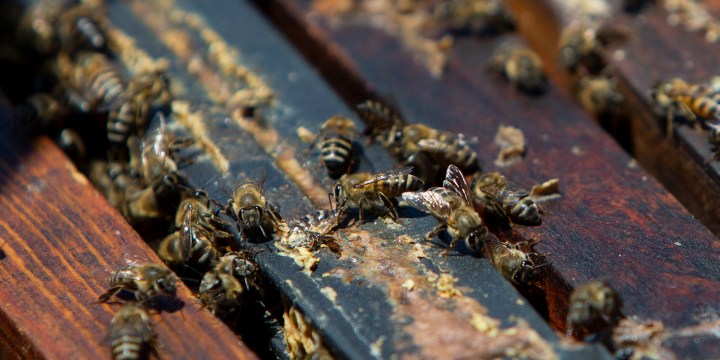
Bees are an integral part of any ecosystem, but globally the bee population continues to decline. With the spread of disease, widespread habitat loss and pesticide poisoning, the Western Cape is looking towards solutions to help save its bees. However, the answer is not straightforward, as scientists debate the best course of action.
Global wild bee populations are declining, either due to habitat loss and the use of pesticides or as a result of the spread of disease. Ever-increasing agricultural demands have put pressure on beekeepers to expand their hives, while natural forage decreases as urbanisation eats away at local flora. Due to the important role bees play as pollinators, the loss of the population would have a devastating impact on the ecosystem and food security.
While globally, particularly in Europe, there have been significant losses to the wild bee population, the extent of the issues, if any, facing South Africa’s wild bee population is still unknown.
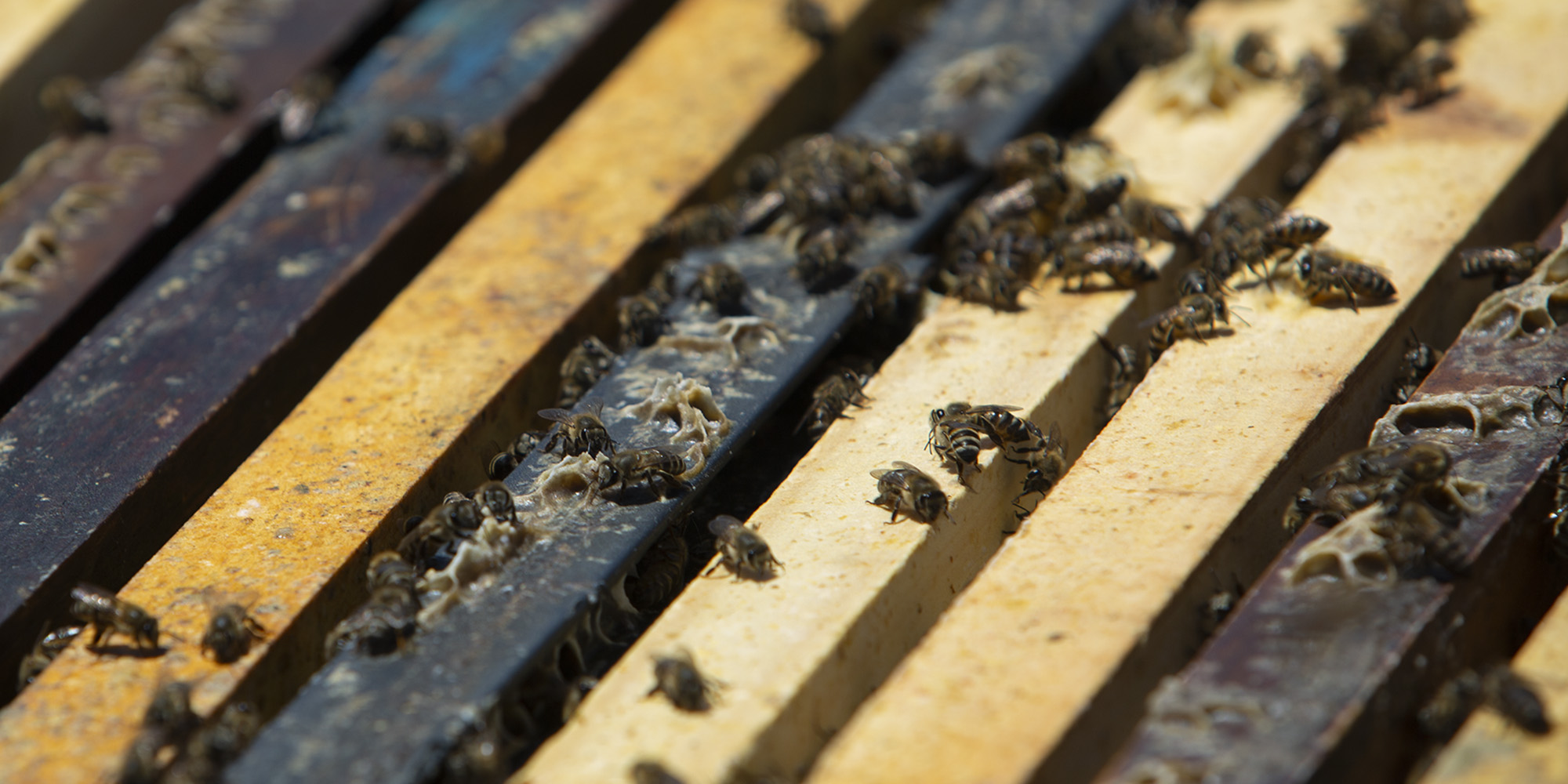
In South Africa, 90% of the honeybee population is wild. However, there is very little information or data available about wild bees, as most studies observe managed bees in hives. (Photo: Aisha Abdool Karim)
According to Colleen Seymour, a principal scientist at the South African National Biodiversity Institute (Sanbi), a lack of resources and taxonomists means little research on South African pollinators, including bees, has been conducted.
“We don’t really know much about pollinators in general in South Africa, we don’t really have a systematic programme to monitor them at the moment. But based on world trends, definitely wild pollinators are in decline due to a combination of habitat destruction, pesticide use, disease and parasites, and climate change,” Seymour told Daily Maverick.
The majority of research in this field focuses on “managed bees”. These are bees which are kept in hives and maintained by beekeepers. Sometimes also referred to as domestic bees, these bees are used in commercial honey production and for pollination on farms. Whereas wild bees, as their name suggests, are unmonitored and indigenous to nature.
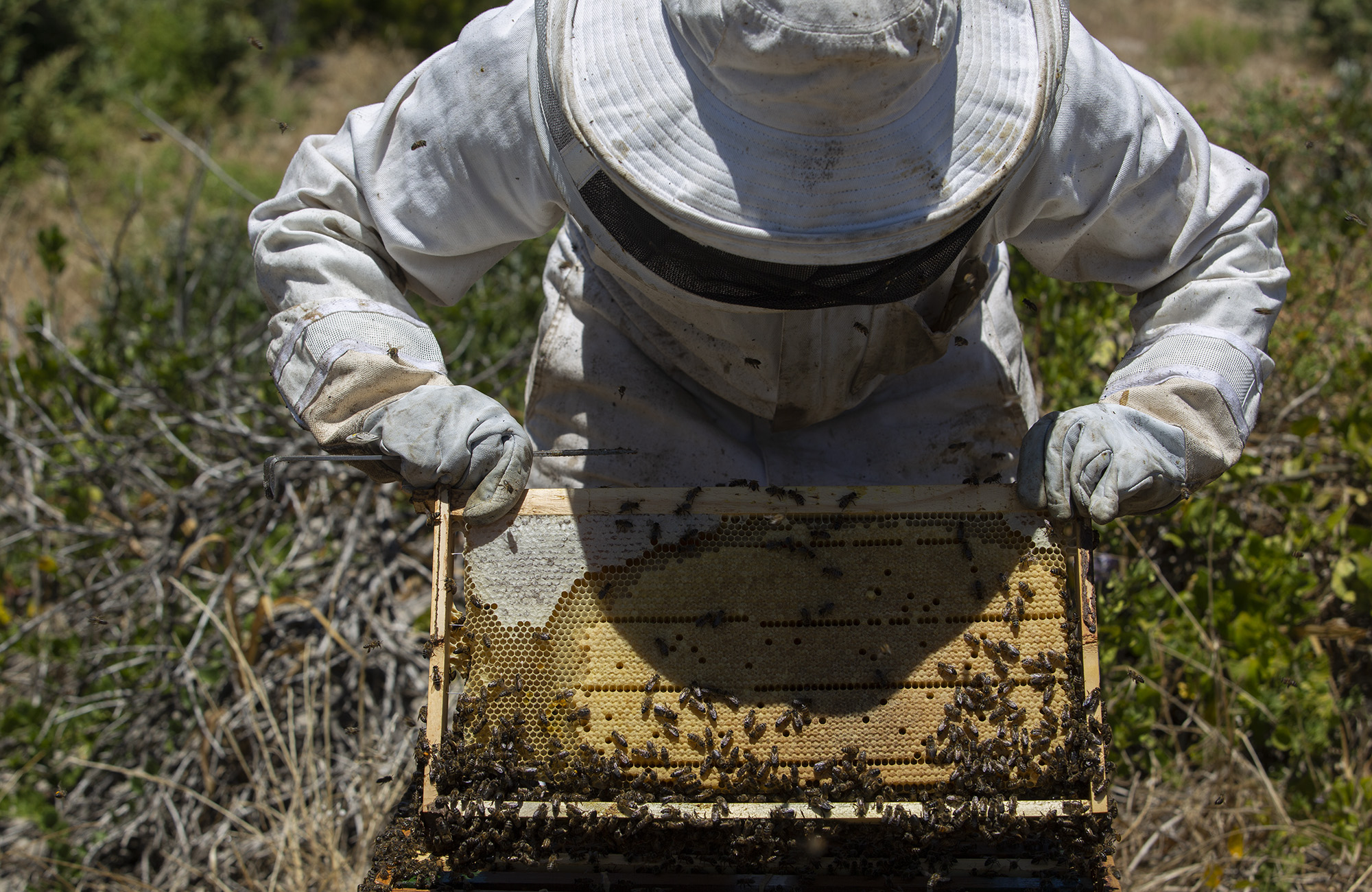
Tracey James, a co-founder of TnT Honey, pulls out a frame with honeycomb and unhatched eggs from inside one of their ‘rehabilitation’ hives in Marina De Gama, False Bay on 4 December 2019. (Photo: Aisha Abdool Karim)
Given the limited information available, there are different viewpoints on how best to manage the local bee population. Some advocate for different forms of intervention and others believe the best thing to do is leave the bees alone.
In 2017, the Western Cape Department of Environmental Affairs and Development Planning launched “Plan BEE”. This study assessed the honey bee industry, with specific emphasis on determining current risks and threats to the wild honey bee population.
Albert Ackhurst, head of biodiversity in the Western Cape department environmental affairs, explained that one of the major reasons for starting Plan BEE was to assess the threats to wild honey bees.
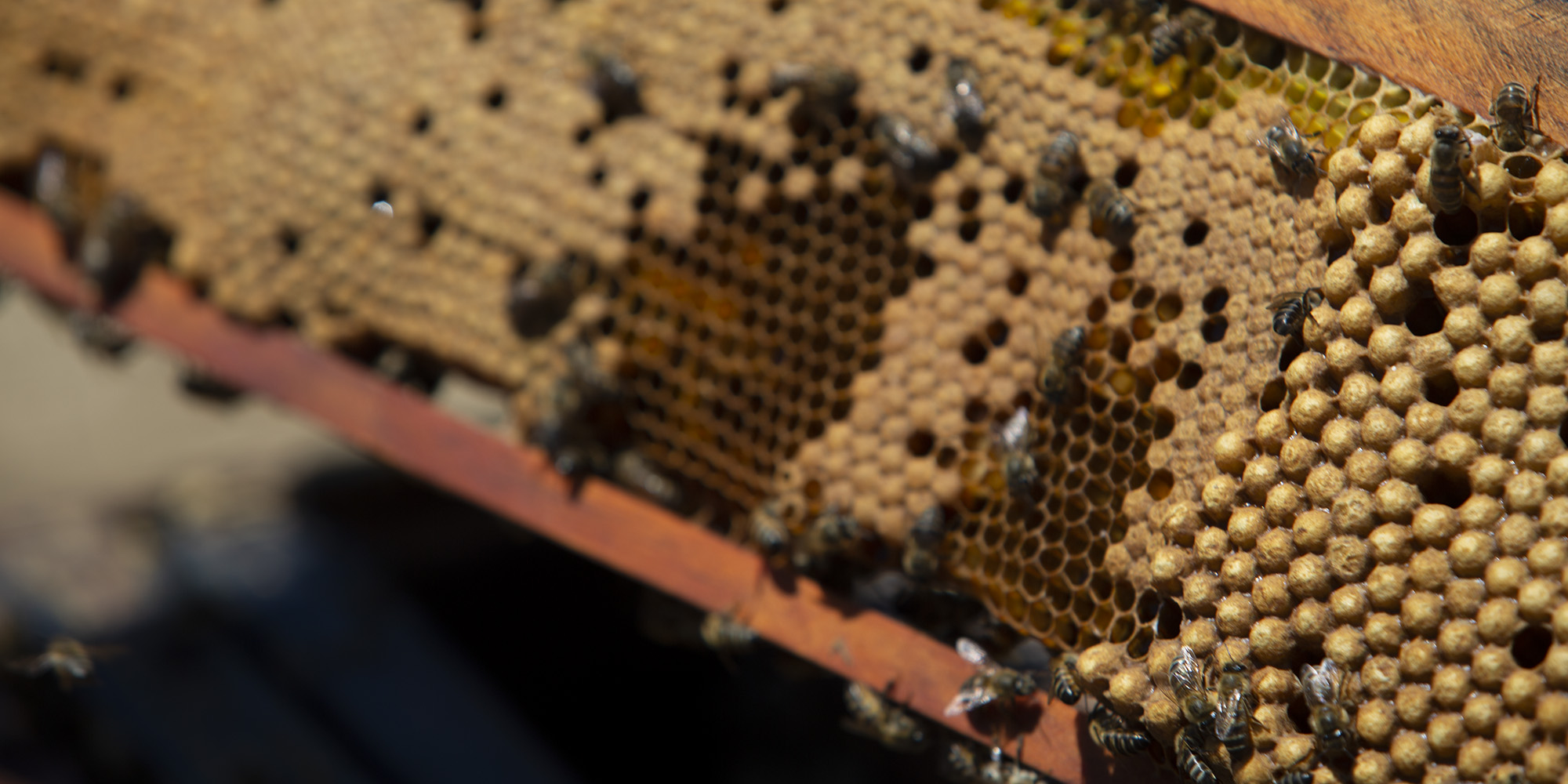
There are currently no policies in place that prevent farmers from placing multiple hives onto one piece of land. This overpopulation of an area can make resources scarce. (Photo: Aisha Abdool Karim)
The assessment found that key threats to wild bees in South Africa include loss of adequate forage due to habitat loss and intensified agriculture, large-scale removal of bees from the wild for the beekeeping industry, diseases like American foulbrood as well as increased and more intense wildfires.
As a result, phase two of Plan BEE involved the creation of a strategy to promote bee conservation and protection, as well as explore wild bee breeding opportunities.
Part of the controversial plan suggests “rewilding honeybees”, where bees will be bred in man-made hives and then placed into “natural protected areas”. This aims to target areas, such as Knysna, where fires are believed to have killed the bee population.
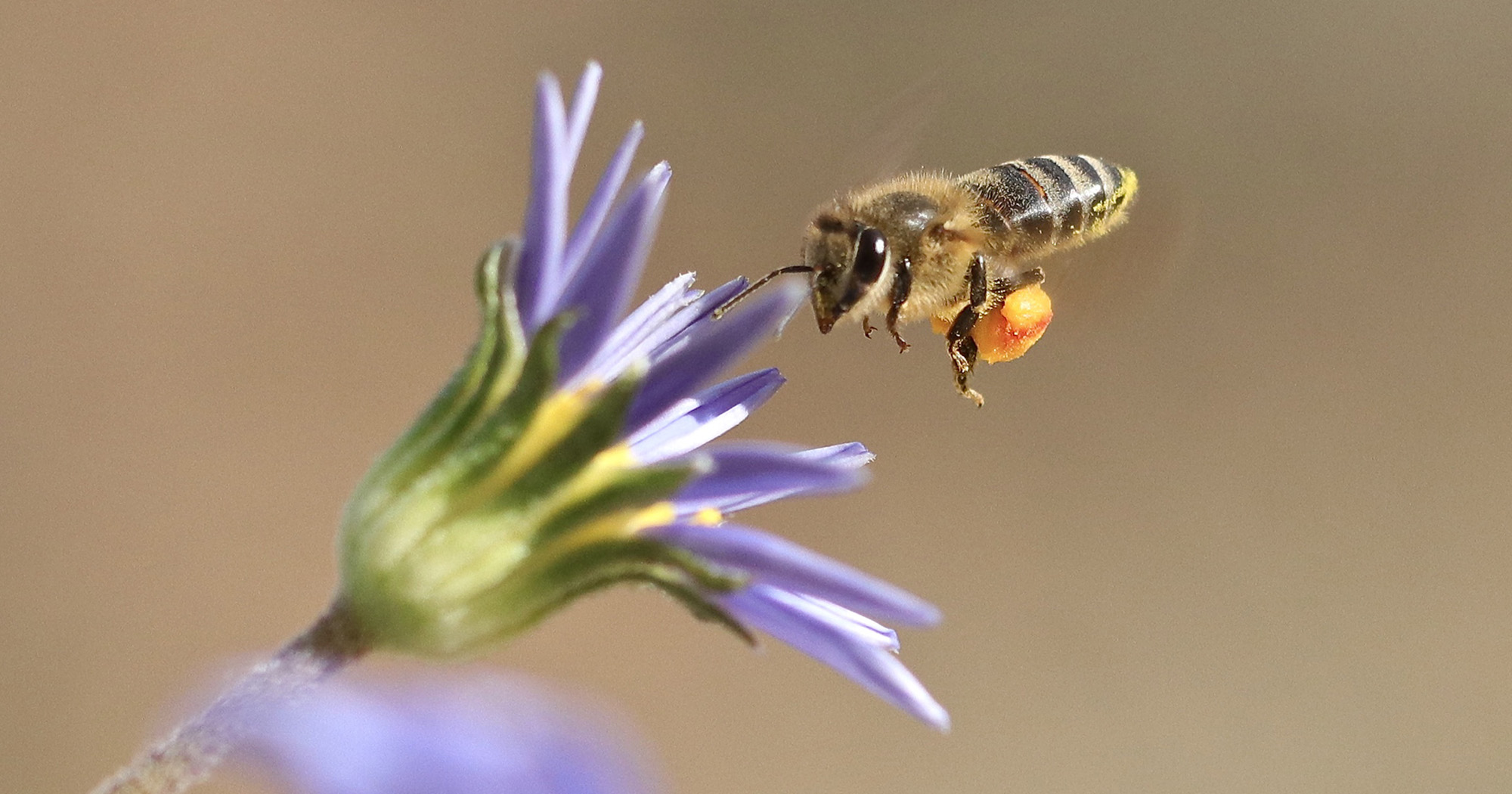
Bee conservationist Jenny Cullinan says that saving the bees means ensuring the safety of their natural habitats and allowing them to live freely. (Photo: Jenny Cullinan)
However, bee conservationist Jenny Cullinan does not believe bees need to be artificially returned to fire-ravaged areas, as she thinks they will come back naturally.
“In South Africa, 90% of our bees live in the wild and are healthy,” Cullinan told Daily Maverick. She believes that implementation of this plan will interfere with the existing wild bee.
A former beekeeper, Cullinan realised there was no information about the wild honeybees. Together with fellow conservationist Karin Sternberg, she started Ujubee, an organisation that works towards the conservation of bees, and began collecting research on wild bee colonies.
“We bee watch like other people bird watch,” quipped Sternberg.
For the past six years, the pair have spent eight hours a day gathering information by watching wild bees in Cape Point Nature Reserve and Table Mountain National Park.
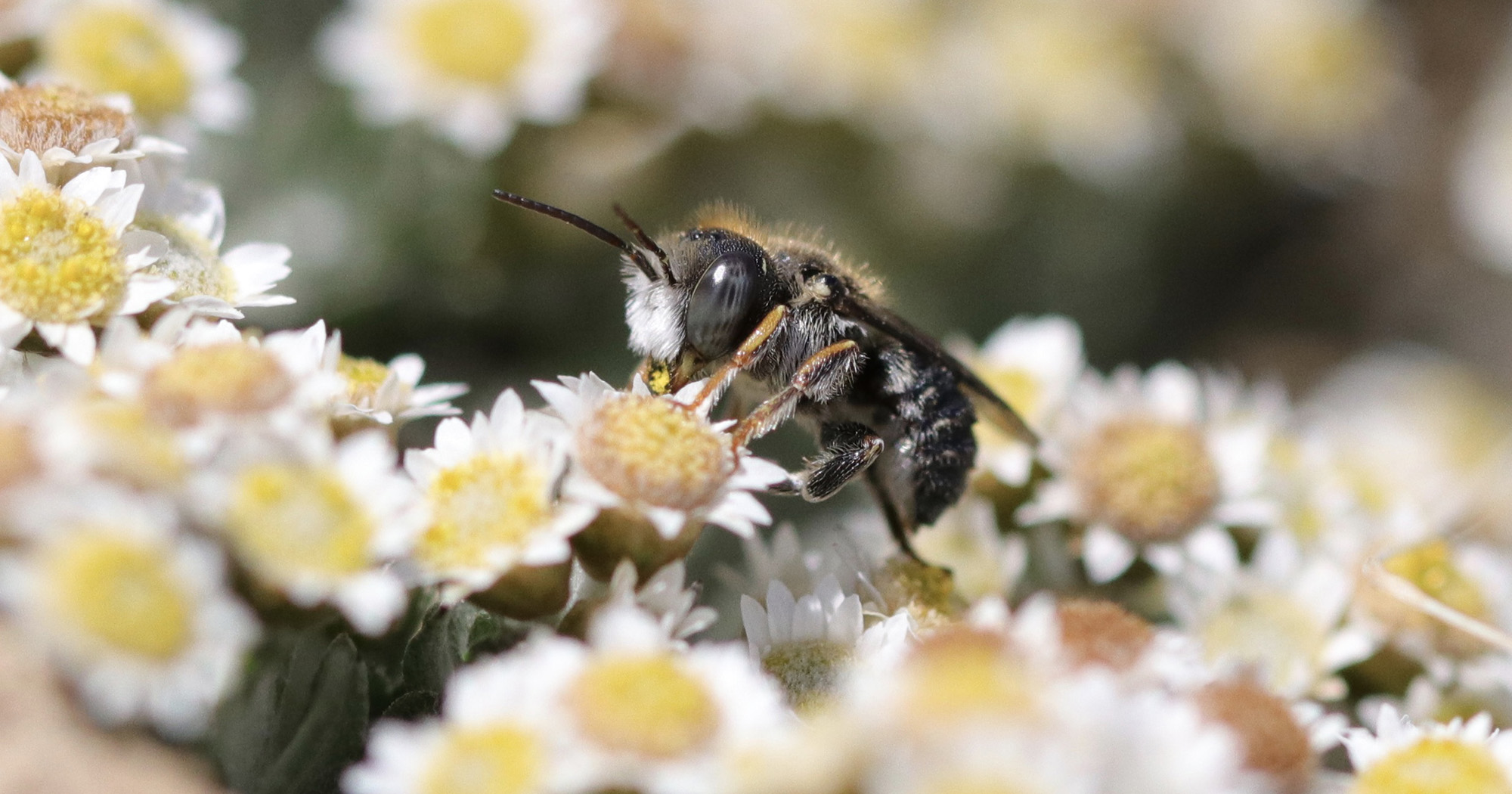
While there is a heavy emphasis on the honeybee, which plays a large role in the commercial agricultural sector, there are also many other types of solitary bees that exist in the wild. (Photo: Jenny Cullinan)
Based on their observations, Cullinan and Sternberg found that there are naturally occurring pollination networks among wild bees and introducing managed bees from hives into these environments will “crash the whole system” as the bees will have to compete for resources.
According to Cullinan, saving the bees means ensuring the safety of their natural habitats and allowing them to live freely.
“We don’t have to do anything else, they look after themselves,” said Cullinan.
The “Wild Bee Populations Conservation Strategy” proposed in April is still under advisement, as it needs more scientific input, and has not yet been formally adopted or implemented by the Western Cape government. Given the stage at which the document is in, Ackhurst said that it should not yet have been made public.
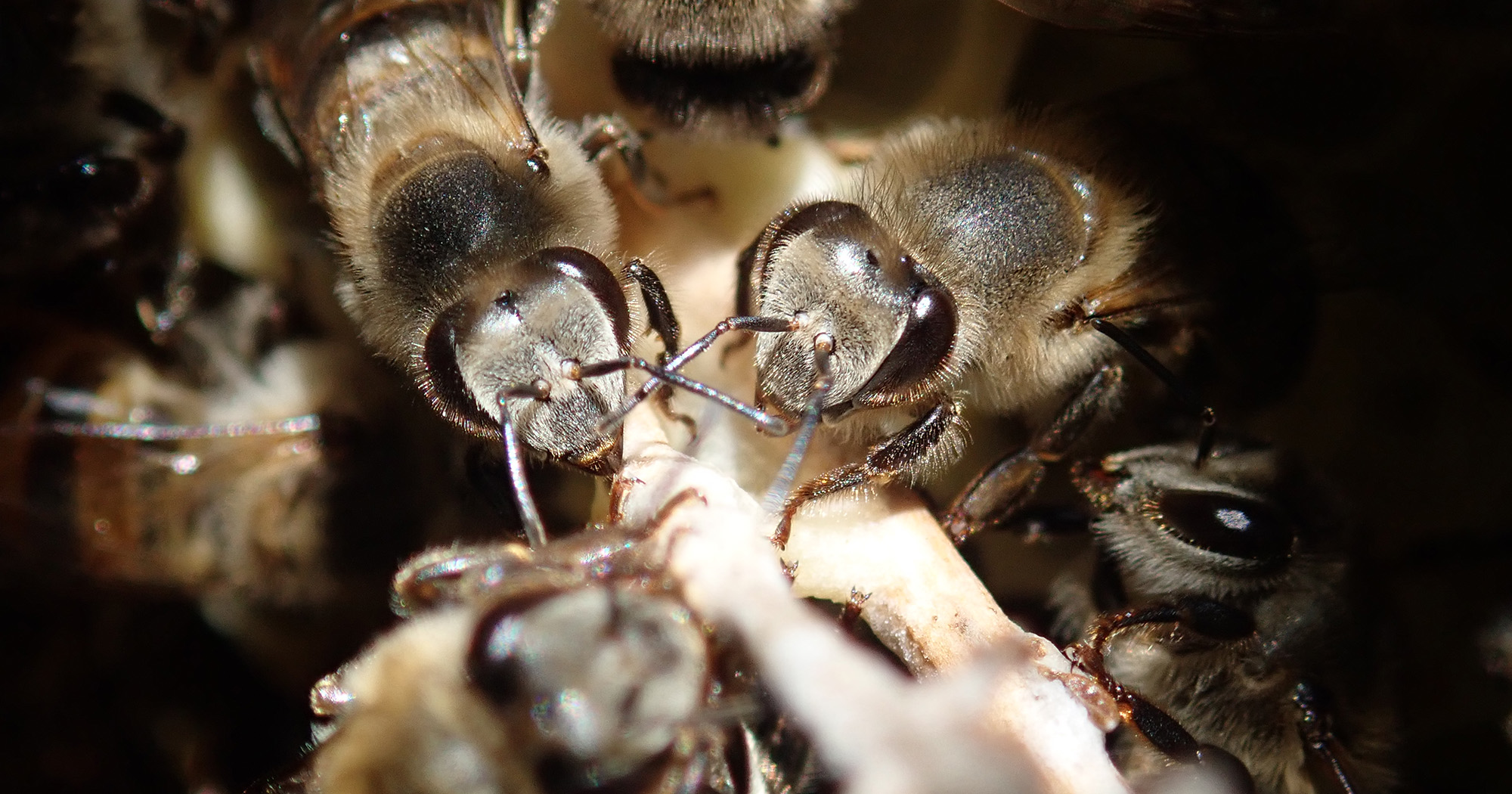
Honey bees are social insects and are in very close proximity to one another inside their nests. This means that when one bee is exposed to a disease or pesticide, it can quickly affect the rest of the colony. (Photo: Jenny Cullinan)
Sanbi director John Donaldson told Daily Maverick that Sanbi intends on writing to the department to voice their concerns over specific aspects of the strategy, including the introduction of bees and forage into areas ravaged by fire.
The additional controversy stems from the government-funded study itself. The conservation strategy, which forms phase two, was conducted by environmental consulting firm Jaymat Enviro Solutions. One of the researchers on the team was Tlou Masehela, who serves as chairman of the Western Cape Bee Industry Association and is also a scientist at Sanbi.
Due to his role at Sanbi, the strategy was published on their website in April 2019. However, there is dissent within Sanbi regarding the plan and given that it was not Sanbi research it should not have been shared on the platform, according to Donaldson.
Although there was controversy over Masehela’s role in the study, considering his ties to both industry and conservation, Donaldson told Daily Maverick that Masehela only contributed to the chapter involving bee forage working group, a project he was already working on, and was not part of the other parts of the study.
Another concern, raised by Cullinan, is that conservation strategies and policies primarily focus on honeybees. Given their role in the commercial sector, both in honey production and pollination, Cullinan said that these policies do not adequately consider other bees, such as solitary bees, and pollinators which create a natural ecosystem.
Beekeeping and other pollinators
For beekeepers Tracey James and Toufiq Fataar, bee conservation is very closely linked to beekeeping. When asked how to conserve bee populations, Fataar responded with: “Aside from beekeeping, what other bee conservation is there?”
To them, there is no difference between a wild bee and those in hives.
“A domesticated bee is first a wild bee,” Fataar told Daily Maverick.
“It’s only once you put it in a box that it becomes domesticated, like after a while you’ll see they become less volatile and they don’t sting you as much because they become used to being in the box, but they will still swarm off once they outgrow that space.”
James and Fataar started their business, TnT Honey, in 2017 and now have 20 hives across the Western Cape region. Most of their hives started in a very similar manner. They were called to remove a bee nest from someone’s house, placed those bees into a hive, then began harvesting honey from the hive to sell.
Earlier this month, they set out at 4am to do a bee removal from Ottery. This was the culmination of a week-long effort to get a bee colony off someone’s property and into a hive, which they then took to one of their beekeeping sites in Stellenbosch.
“The opposite to the bee removals would be that people would Doom [poison] them,” Fataar told Daily Maverick.
“Instead of that, you rehouse them, you put them on another place where they are of benefit to the ecosystem, to the flowers and so you’re also helping conservation of the bees.”
Although the duo primarily began their business as a means to sell honey, they also run bee awareness projects and educational programmes in schools around beekeeping and conservation.
Yet, beekeeping is seen by some as one of the biggest threats to the wild bee population.
“We’ve got the problem that people put wild bees in boxes,” Ackhurst told Daily Maverick.
Bees are captured from the wild for commercial use to produce honey and pollinate farms. Once the bees are put in these boxed hives, it “weakens them”, said Ackhurst.
The bees become more vulnerable to diseases and lose their resilience, as they are forced to feed on monocultures. Without the naturally varied diet bees get by foraging, they are unable to get the required nutrients and vitamins.
Currently, no policy exists in any of the provinces to prevent farmers from placing multiples hives on to one piece of land, a practice known as overstuffing, Masehala told Daily Maverick. Overstuffing can devastate the populations of other pollinators in the area, who suddenly have to compete with hundreds of thousands of honey bees.
According to Masehela, beekeepers find it particularly difficult to locate large tracts of land where they can store their hives during the pollinating off season.
“If a beekeeper knowingly overstocks an area then you will have issues with food competition,” Masehala told Daily Maverick. According to Cullinan competition for resources can get ugly.
“The other pollinators sometimes attack honey bees when beekeepers bring them in, because they know the honey bees will eat everything before they can,” said Cullinan.
Bees are also under attack from diseases, which are easily spread across hives that are in close proximity to one another. Wild bee nests, on the other hand, can be kilometres apart, preventing disease from spreading rapidly.
“We know that several bee species do share certain pathogens and pests across the species, but locally we don’t have any data to substantiate that,” Masehala told Daily Maverick.
According to Ackhurst one of the possible consequences of using honey bees as pollinators is their resilience to diseases may be reduced.
Although there has been little research into the impact managed bees have on the wild bee population in South Africa, the hive environment leaves the bees vulnerable to chemicals from pesticides used on farms.
“The managed bees and the farmed bees are suffering because of the stresses we put them under,” said Cullinan. “Not just from housing, but how we manage them, how we move them around, they can’t locate themselves and just be healthy in their environments.”
To the everyday South Africans worried about pollinators such as bees, Seymour recommends planting a variety of different flowers, particularly indigenous flowers, in gardens. DM



















 Become an Insider
Become an Insider